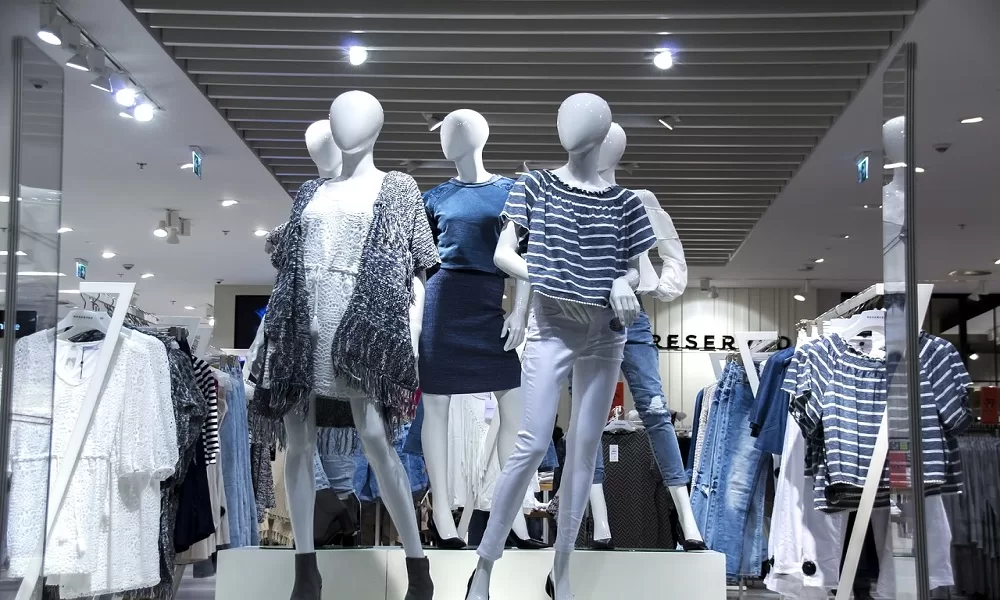Is Branded Clothing Really Better Because of the Fabric?
Is Branded Clothing Really Better Because of the Fabric?
Blog Article
Comprehending Clothing: The Importance of Fabric Options in Your Wardrobe
The option of material in clothing plays a crucial duty in both appearances and functionality. Various products provide differing degrees of toughness, comfort, and breathability, directly influencing the wearer's experience. Understanding these nuances can boost one's closet substantially. Lots of forget exactly how these choices can impact not simply individual design, however likewise sustainability. What fabric choices could redefine your wardrobe and align it with both design and obligation?
The Duty of Fabric in vogue and Performance

Usual Fabric Types and Their Qualities
When picking clothes, comprehending the characteristics of common fabric kinds is important for making educated choices. Cotton, a widely-used all-natural fiber, is known for its breathability, versatility, and softness, making it suitable for laid-back wear and day-to-day garments. Linen, one more all-natural option, flaunts superb moisture-wicking residential properties and a distinctive structure, perfect for cozy climates.Wool, usually favored for its warmth and durability, varies in excellence; merino wool is soft against the skin, while coarser kinds are made use of for outerwear. Synthetic textiles like polyester and nylon supply toughness and resistance to creases, making them popular for activewear and travel garments. Finally, blends, which integrate synthetic and natural fibers, can enhance capability while maintaining comfort. By recognizing these textile features, people can pick garments that straightens with their way of life and aesthetic preferences.
Breathability and Comfort: Choosing the Right Fabrics for Various Climates
Picking the right fabrics for numerous climates can greatly boost convenience and overall wearability. Breathable products are vital in hot environments, as they allow air flow and wetness evaporation. Fabrics such as cotton, bed linen, and moisture-wicking synthetics properly attract sweat far from the body, maintaining the wearer cool and completely dry. Alternatively, in chillier climates, thicker textiles like wool or fleece supply insulation while preserving breathability, guaranteeing warmth without overheating.Additionally, the selection of fabric weight plays an important role; light-weight materials are more suitable for summertime, whereas larger alternatives are matched for winter season wear. Recognizing the special buildings of each material allows individuals to dress suitably for varying climate conditions. Inevitably, picking breathable and comfortable textiles customized to certain climates can considerably improve everyday convenience and improve the general experience of using clothing.
Sturdiness and Treatment: Just How Material Influences Longevity of Your Closet
Selecting the right materials can considerably influence the longevity and care requirements of a closet. Fabrics such as cotton and polyester are understood for their strength and ease of maintenance, making them excellent for everyday wear. On the other hand, fragile materials like silk and lace call for more cautious handling and specialized cleaning methods, which can raise the time and effort required for care. Branded Clothing.Durability is likewise influenced by the material's weave and coating; tightly woven textiles have a tendency to resist deterioration much better than loosely woven options. Additionally, synthetic blends commonly provide improved sturdiness, combining the most effective high qualities of several fibers.Understanding the care guidelines for every fabric go is crucial, as improper drying out or washing can lead to early wear. Inevitably, choosing long lasting products can lead to a longer-lasting closet, lowering the regularity of replacements and contributing to a much more sustainable style option
The Influence of Material on Fit and Shape

Lasting Fabric Options: Making Eco-Friendly Decisions
The effect of fabric extends beyond fit and silhouette to incorporate environmental aspects, motivating a growing passion in sustainable textile selections. Green fabrics, such as organic cotton, hemp, and Tencel, are obtaining traction amongst customers that focus on sustainability in their closets. These materials are commonly produced with less chemicals and water, lowering their ecological footprint.Additionally, recycled textiles, made from post-consumer waste, use a cutting-edge solution to the textile sector's air pollution issue. Brands significantly accept openness in their sourcing approaches, permitting consumers to make informed choices about their purchases.Choosing sustainable textiles not only supports moral techniques however also encourages the fashion market to adopt more responsible manufacturing methods. As understanding of environmental issues climbs, people are advised to review the long-lasting impact of their material options, fostering an activity towards a much more sustainable and ecologically mindful method to fashion.
Elevating Design: Exactly How Textile Can Transform an Outfit
While lots of may focus on shade and cut when selecting an outfit, the option of fabric plays a crucial role in boosting style and improving overall look. Different products share distinctive moods and messages; for instance, silk shows high-end and refinement, while denim uses a casual, loosened up ambiance. The structure and drape of a fabric can dramatically change the silhouette, with organized materials supplying a polished appearance and softer ones creating a much more fluid, relaxed aesthetic.Moreover, the weight of the fabric influences wearability across seasons. Light-weight materials like bed linen and cotton are excellent for summertime, while larger products such as woollen and velvet supply heat and beauty in cooler months. Understanding fabric buildings, such as breathability and stretch, also empowers people to make enlightened selections that improve comfort without jeopardizing design. Inevitably, the right textile can change a clothing from regular to remarkable, making it a crucial consideration in any wardrobe.
Regularly Asked Inquiries
How Do I Determine the Fabric Content of My Clothes?
To determine material web content, one can examine care tags, conduct melt examinations for fiber recognition, or speak with material swatches. These methods assist distinguish materials, making sure educated choices for apparel care and upkeep in day-to-day wear.
Can Material Choice Affect My State Of Mind or Self-confidence?
Fabric selection can greatly influence an individual's mood and self-confidence. Branded Clothing. Particular materials may stimulate sensations of comfort or style, while others can feel uncomplimentary or restrictive, inevitably affecting self-perception and emotional health throughout the day
What Fabrics Are Ideal for Delicate Skin?
For people with delicate skin, all-natural materials like linen, cotton, and bamboo are often advised. These materials are breathable, hypoallergenic, and less most likely to trigger irritation, making them ideal choices for convenience and skin health.
Just how Do I Correctly Laundry and Treatment for Various Fabrics?
To properly clean and care for different materials, one have to think about each product's certain demands, including temperature level settings, detergents, and drying approaches, ensuring durability and preserving the material's original Bonuses top qualities for optimal usage.
Exist Certain Fabrics for Athletic or Performance Wear?
Sports or efficiency wear often utilizes fabrics such as polyester, nylon, and spandex. These products are developed for moisture-wicking, breathability, and flexibility, improving activity and comfort throughout exercises while supplying resilience and support. Conversely, in cooler environments, thicker textiles like woollen or fleece provide insulation while retaining breathability, making certain heat without overheating.Additionally, the selection of textile weight plays an essential duty; light-weight fabrics are preferable for summertime, whereas heavier choices are suited for wintertime wear. In comparison, delicate products like silk and shoelace need more careful handling and specialized cleaning methods, which can increase the time and effort required for care.Durability is additionally affected by the textile's weave and surface; securely woven materials often tend to resist wear and tear better than loosely woven choices. In contrast, inflexible materials can limit movement yet supply a classic, polished look.Moreover, the density and texture of the textile can influence the visual perception of body shape. The impact of fabric expands beyond fit and silhouette to encompass environmental factors, triggering a growing interest in lasting fabric selections. The appearance and drape of a material can significantly change the shape, with structured fabrics providing a sleek appearance and softer ones creating a much more fluid, kicked back aesthetic.Moreover, the weight pop over here of the textile influences wearability across seasons.
Report this page